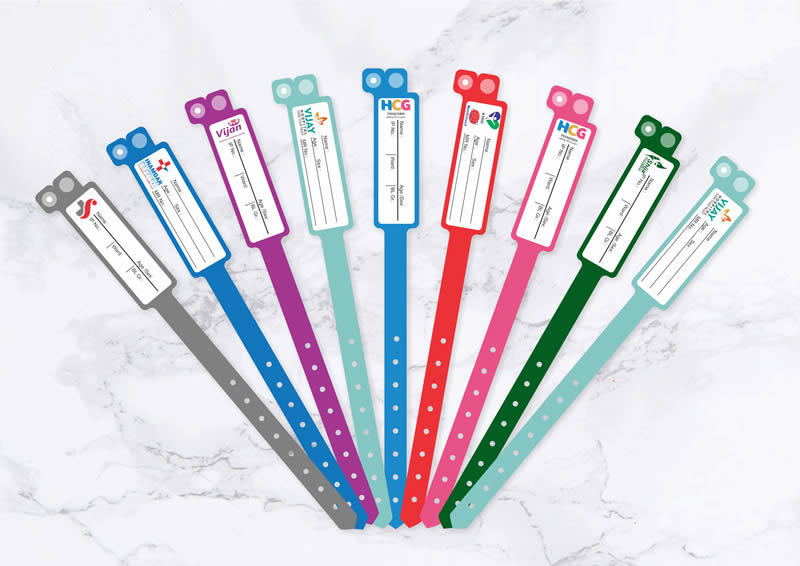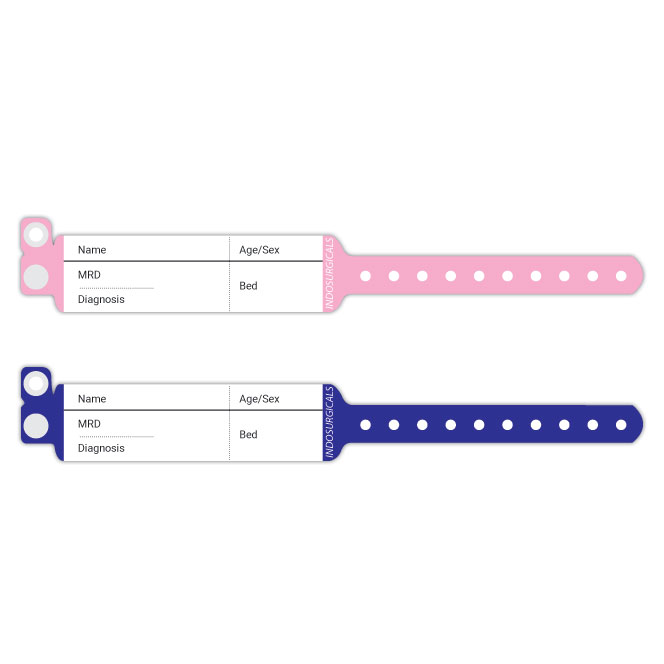A Comprehensive Guide to the Various Types of Patient Identification Band
A Comprehensive Guide to the Various Types of Patient Identification Band
Blog Article
Exploring the Various Types of Patient Identification Band Used in Medical Facilities
In the intricate world of healthcare, the vital function of Patient Identification bands usually goes unnoticed. These bands, varying from basic paper wristbands to innovative RFID bands, create the foundation of Patient safety protocols, guaranteeing accuracy in Patient Identification. Yet, the large variety of these bands, each with its unique benefits and constraints, is usually neglected. As we browse via this subject, one might gain insight right into the refined intricacies and essential importance of such bands in medical facilities.
Recognizing the Value of Patient Identification Bands
While they might appear like simple devices, Patient Identification bands play a crucial duty in clinical facilities. These bands offer as a critical tool for verifying Patient identification, avoiding clinical mistakes connected to misidentification. The bands usually present important info such as the Patient's name, age, blood type, and any recognized allergic reactions. They allow health care specialists to quickly access this important information, consequently helping with timely and accurate medical treatment. Patient Identification bands likewise help in simplifying management jobs, making certain exact record-keeping and billing. Despite their simplicity, these bands personify the principle of Patient security, a keystone of quality health and wellness treatment. Without them, the threat of clinical mistakes, and subsequently, Patient harm, might dramatically raise.
Traditional Paper Wristbands: Their Usage and Limitations
Traditional paper wristbands have been a staple in Patient Identification throughout various medical facilities. While their usage prevails, they harbor specific restrictions that may influence their effectiveness in Patient administration. This area will certainly concentrate on the scope of their application and the intrinsic downsides associated with their use.
Paper Wristbands: Usage Scope
In the world of Patient Identification, paper wristbands have actually long held an essential duty. These bands are typically used in outpatient settings, where the Patient's keep is temporary. In spite of innovations in technology, the simple paper wristband remains a cost-efficient and dependable option for Patient Identification in numerous healthcare scenarios.
Limitations of Paper Wristbands
In spite of their prevalent use, paper wristbands are not without their downsides. Their physical longevity is among the substantial restrictions. Direct exposure to water, sweat, or harsh handling can make them unreadable or also cause them to break down. On top of that, paper wristbands typically do not have the technological capacities of even more contemporary choices, such as barcoding or RFID chips, limiting their functionality to simply showing written information. The failure to upgrade or customize the data on the wristband is one more imperfection. Additionally, if the details is transcribed, clarity can be compromised, bring about prospective misidentification. Ultimately, paper wristbands can create discomfort or skin irritability to some patients, specifically when used for extensive periods.
Barcoded Wristbands: Improvements in Patient Identification
While Patient Identification has actually long been a crucial element of healthcare, the introduction of barcoded wristbands represents a considerable jump onward. These bands leverage the simpleness of barcoding innovation, permitting for Patient information to be swiftly checked and accessed. They improve the rate and accuracy of Patient Identification, minimizing the danger of medical mistakes related to misidentification.
Radio Regularity Identification (RFID) Bands: a Step Towards Futuristic Healthcare
The evolution of Patient Identification bands has actually caused the development of Radio Frequency Identification (RFID) Bands (patient identification band). These cutting-edge devices present crucial benefits for health care facilities, providing a much more effective and highly advanced ways of Patient Identification. The implementation of RFID in medical care is a substantial action towards a more advanced method to Patient monitoring and security
Understanding RFID Bands

RFID Bands: Trick Advantages
Mainly, these bands enhance Patient safety by supplying precise, immediate Identification, thereby minimizing clinical mistakes. RFID bands can keep a vast amount of Patient data, including clinical background and allergic reactions, making it possible for personalized care. In general, RFID bands represent a substantial innovation in Patient Identification technology, benefiting both patients and healthcare suppliers.
Applying RFID in Medical Care
As we enter a technically sophisticated age, the application of RFID bands in health care ends up being progressively crucial. These bands supply a smooth method to track and determine clients, ensuring their security and improving efficiency in treatment procedures. RFID bands offer many benefits over standard Identification techniques. They can store a substantial quantity of data, consisting of the Patient's case history and therapy strategies, which can be quickly accessed by medical care suppliers. This information aids medical professionals make notified decisions relating to the Patient's treatment plan. Additionally, RFID bands reduce clinical errors by offering exact Patient Identification, which is crucial in protecting against misdiagnosis or incorrect medication management. Therefore, a fantastic read the implementation of RFID bands is a significant action towards boosting Patient security and healthcare distribution.

Color-Coded Wristbands: Assisting in Quick and Accurate Medical Diagnosis
In the busy setting of a medical center, color-coded wristbands have emerged as essential tools for swift and specific Identification of a client's medical condition. These wristbands, used by clients, lug details colors that correspond to different medical problems or standings. This system is designed to use instant visual signs to healthcare service providers, enhancing Patient security and care top quality.
Strategies for Efficient Implementation and Monitoring of Patient ID Bands
Achieving optimal use Patient Identification bands requires a well-structured technique for their execution and monitoring. The primary step involves training all health and wellness workers on the useful content value of appropriately using and reviewing these bands. Medical facilities should standardize the usage of ID bands throughout all divisions, making sure uniformity and minimizing inconsistencies. Regular audits should be conducted to confirm adherence to plans and to fix any type of variances. Patient education is additionally vital; individuals should comprehend the purpose of the bands and the demand for their consistent wear. patient identification band. Finally, it's important to have a backup plan in area, such as barcode scanning or biometrics, to make sure that Patient Identification is never ever compromised.
Final thought
Patient Identification bands are vital in clinical facilities to make certain security and precision. Reliable implementation and administration of these bands can dramatically decrease clinical errors, increase effectiveness, and boost overall Patient care.
These bands, varying from basic paper wristbands to advanced RFID bands, develop the foundation of Patient safety methods, making sure accuracy in Patient Identification.The advancement of Patient Identification bands has brought regarding the Recommended Reading development of Radio Regularity Identification (RFID) Bands. On the whole, RFID bands represent a substantial innovation in Patient Identification innovation, benefiting both individuals and medical care companies.
RFID bands reduce clinical errors by giving accurate Patient Identification, which is crucial in preventing misdiagnosis or incorrect medication management. Patient education is likewise important; individuals need to recognize the objective of the bands and the need for their continuous wear.
Report this page